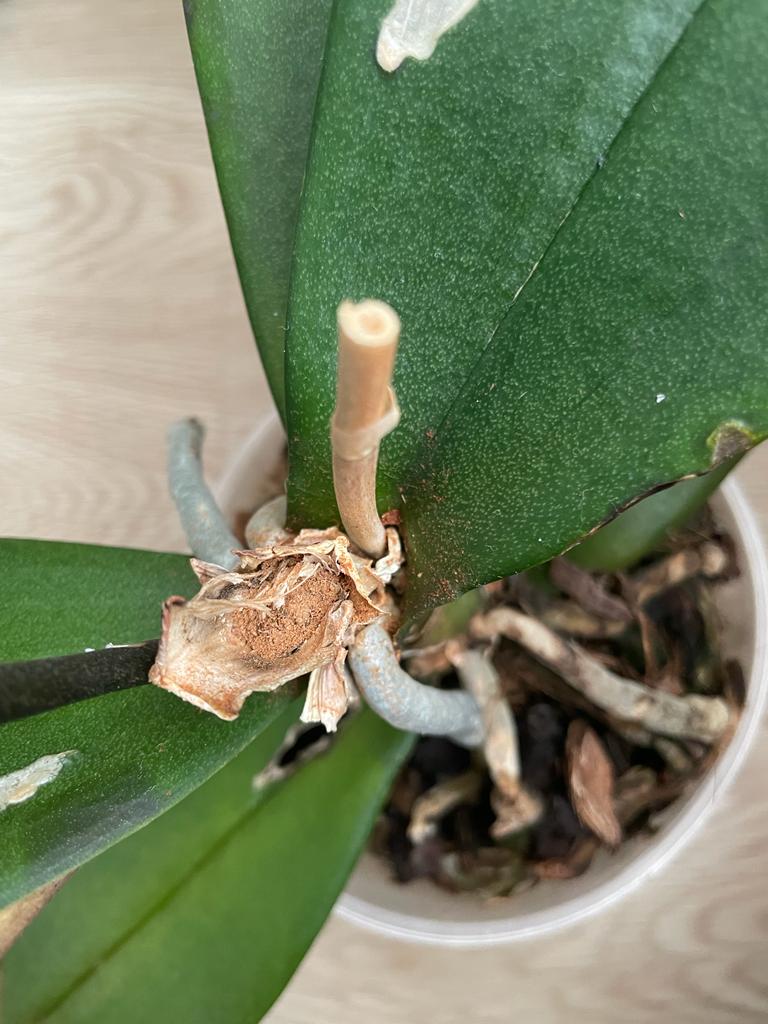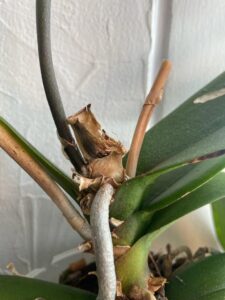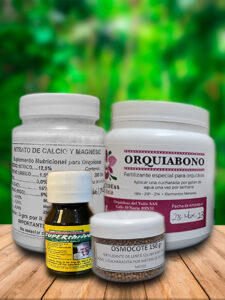This serious disease caused by bacteria is very difficult to control and can potentially kill the plant. The symptoms progress rapidly, with the leaves wilting and turning yellow at first, then black, before eventually falling off (this process can happen overnight). It’s worth noting that the lower leaves of the plants tend to wither over time, meaning they will turn yellow and drop off. This is a normal process that all plants go through (see: Dry Leaves on Orchids). The problem arises when all leaves, even the young ones, start undergoing this process, leading to the tissue at the base of the leaves turning black.

Orchids that are generally affected by this disease are those with monopodial growth, meaning they grow upwards and do not produce offspring. Some examples include Phalaenopsis, Phragmipedium, and Paphiopedilum orchids, where their leaves form a crown (with new leaves growing between the old ones).
Why is the crown of my plant rotting?
- Excess Moisture: Orchids require a proper balance of moisture. If the growing medium retains too much water, if overwatering occurs, if watering is done too late, or if water accumulates between the leaves, the roots and crown can rot. It’s important to allow the medium to slightly dry between waterings, use a pot with good drainage, and remove water deposits or droplets between the leaves. For this reason, it’s recommended to water your orchid in the morning hours to allow time for drying before the night’s colder temperatures cool down the water and potentially damage the leaf cells, allowing bacteria to enter.
- Physical Damage: Bumps, cuts, or other types of injuries can leave the orchid’s crown vulnerable to fungal or bacterial infections. It’s essential to handle orchids with care and avoid any form of damage.
- Fungal or Bacterial Infections: Orchids are susceptible to various diseases caused by fungi and bacteria. Infections can affect the crown and spread rapidly. If you notice dark spots, discoloration, or a foul odor on the crown, there may be an infection.
- Ventilation Issues: Orchids need good air circulation around their roots and crown. A humid and stagnant environment can encourage the growth of harmful microorganisms. Ensure there’s sufficient ventilation in the area where your orchid is kept.
- Poor Hygiene: Neglecting to clean and disinfect gardening tools, pots, and other equipment used in orchid care can introduce pathogens to the plant. Regularly cleaning and sterilizing your gardening tools is important to prevent disease spread.
What measures can I take to try to save my plant?
- Stop Watering: If crown rot is due to excess moisture, it’s important to halt watering until the growing medium dries adequately. Allow the substrate to slightly dry before resuming watering, and ensure good drainage in the pot.
- Disinfect the Crown: You should apply undiluted hydrogen peroxide and cinnamon. This helps dehydrate the plant, disinfect, and kill bacteria.
- Apply Fungicides or Bactericides (depending on the cause): If you suspect that the rot is caused by a fungal or bacterial infection, you can consider using specific chemical products to treat the disease. Proper fungicides and bactericides for orchids can help control pathogen spread. Follow the product instructions and repeat applications as necessary.
- Leave the Plant Be: Keep your plant still and avoid disturbing its root system. If there is any healthy part of the root system, your orchid will regrow from there and can recover. Moving it may stress the plant and lead to its demise.
- Promote Ventilation and Hygiene: Ensure good air circulation around your orchids and maintain an appropriate distance between them. Place the plants in a well-ventilated area and avoid a stagnant environment. Additionally, maintain good hygiene in your cultivation area by regularly cleaning and disinfecting tools and equipment.
- Monitor and Adjust Care: Observe your orchid’s progress closely after taking the above measures. Ensure you provide the proper care, including the right amount of light, temperature, and humidity to promote recovery (see: How to take care for My Phalaenopsis?). Avoid any additional stress factors and closely monitor the plant’s health.
*Most of the time, once the crown has been attacked to the core, the damage to the plant will be irreversible, leading to its death. Therefore, remember to regularly check your plants and take swift action at the first sign of anything unusual.
If your orchid’s crown is rotting, we recommend examining it closely to determine the exact cause of the problem. Keep in mind that in some cases, crown rot can be challenging to treat. If you’re unsure how to proceed or if the problem persists, it’s advisable to reach out to our stores in Cali or Ginebra or contact us through our social media channels so that our staff can provide you with better guidance.
In our stores, we also have all the necessary accessories for your orchid cultivation, from fungicides to Orchimedium (substrate), decorative bases, pesticides, Orchibloom, pots, Orchitutor, and many other items.





